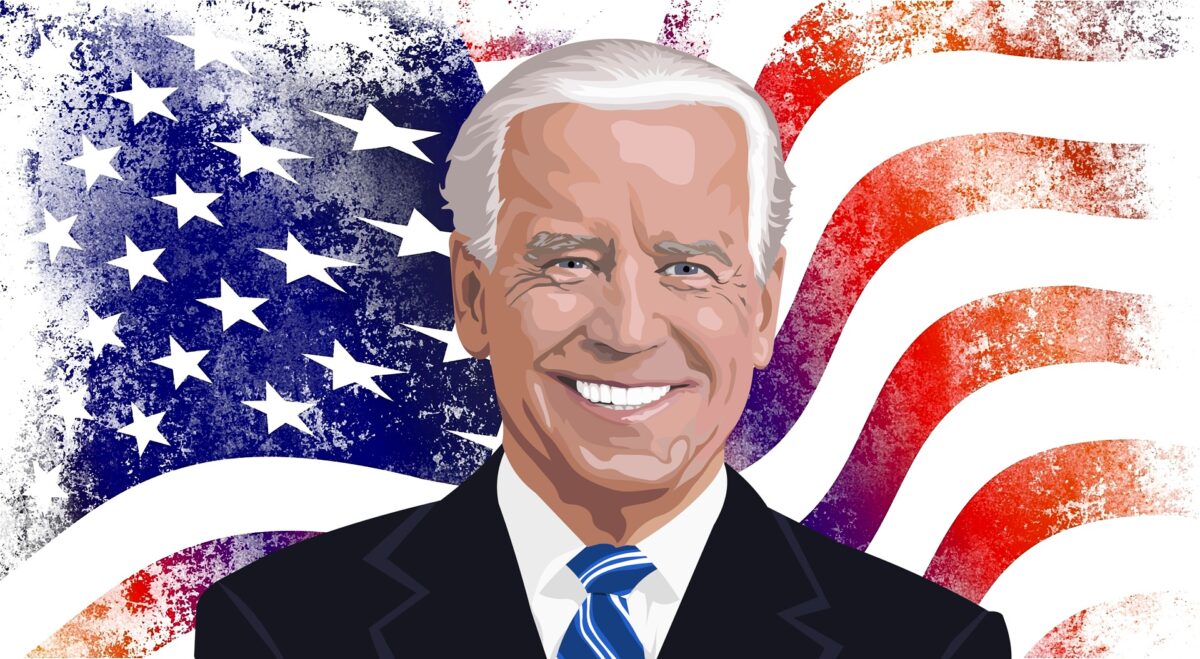El presidente electo Joe Biden quiere inaugurar el despacho oval pisando fuerte, con un nuevo programa de estímulos por 1.9 trillones de dólares, con el fin de impulsar la economía, mientras se masifica la aplicación de vacunas contra el Covid-19 y la situación vuelve a la normalidad.
El programa, llamado “American Rescue Plan”, comprende los siguientes puntos:
Pagos directos de $1,400 a la mayoría de los estadounidenses, lo que eleva el alivio total a $2,000, incluidos los pagos de $600 de diciembre.
Aumentar el beneficio de desempleo federal por semana a $ 400 y extenderlo hasta fines de septiembre.
Aumentar el salario mínimo federal a $15 por hora.
Prorrogar las moratorias de desalojo y ejecución hipotecaria hasta finales de septiembre.
$350 mil millones en ayuda del gobierno estatal y local.
$170 mil millones para escuelas e instituciones de educación superior K-12.
$50 mil millones para pruebas de Covid-19.
$20 mil millones para un programa nacional de vacunas en asociación con estados, localidades y tribus.
Hacer que el Crédito Tributario por hijos sea totalmente reembolsable durante el año y aumentar el crédito a $3000.
Lo cual ha sorprendido a más de un analista, debido a la agresividad del plan, si se compara al aprobado en diciembre por 900 billones. Sin duda, ha despertado también escepticismo, más teniendo en cuenta el cambio de poder en el senado, donde los demócratas puedes plantar una oposición férrea, sin embargo, se ha podido saber que hay algunos representantes del partido contrario dispuestos a apoyar el plan Biden.
El costo para el gobierno estadounidense definitivamente es bien elevado, sin embargo, no es más costoso de lo que puede llegar a ser una recesión estando tan cerca de la vuelta a la normalidad. Esta semana tuvimos el número más alto de Seguros de desempleo desde agosto, las muertes en los Estados Unidos por Coronavirus ascendieron a 347.000, y es probable que se vayan a extender nuevas medidas de distanciamiento social, por lo cual sería un retroceso importante que se sentiría en toda la economía, y el mercado bursátil que no es ajeno.
Sin embargo, contrario a lo que dicta la lógica económica, donde a mayor oferta de dólares, la divisa norteamericana debería estar presentando caídas mayores, no se está cumpliendo. Y de hecho, acabamos de cerrar la semana más alcista en lo últimos 2 meses, lo cual lo podemos explicar desde 3 puntos de vista.
El primero, es un punto de escepticismo total, donde los traders pueden estar anticipando una negación del plan de estímulos, lo cual, negaría la presencia de más dólares circulando, situación que de alguna forma ya estaba descontada, y utilizaron la noticia para como dice el viejo adagio bursátil “compra el rumor, vende la noticia”.
El segundo escenario, puede ser uno de decepción, donde el mercado esperaba una medida más inmediata para inyectar actividad económica en las calles, por lo cual no verían suficiente la medida, y se genera una salida de acciones hacía efectivo para emergencias.
El tercero, puede sustentarse en la propensión marginal a consumir (para lo economistas), que se traduce a cuánto de un aumento en los ingresos puede evidenciarse en un aumento en el consumo. Que para este caso puede ser un efecto muy leve. Recordemos que miles de personas tuvieron que sustentarse a partir de ahorros, o se estuvieron descapitalizando durante la pandemia, y suponiendo un consumidor racional, este aumento en los ingresos se destinaría a reponer esos ahorros únicamente, y dejar un fondo de emergencia si la situación de prolonga, por lo cual nuevamente no habría efecto en el gasto, y de alguna forma crearía escasez de efectivo.
A ciencia cierta no podemos estar seguros de cual haya sido la razón de la reacción del mercado, que el viernes 15 de enero cerraba con las acciones en terreno negativo, y el dólar subiendo, cuando la teoría económica dictaba exactamente lo contrario. Seguramente, la razón se ira esclareciendo con el paso de los días, mientras tanto hay que recordar que para pesar de mis colegas economistas, el mercado es totalmente irracional, y el fenómeno especulativo y de anticipación, genera que tantas horas de estudio parezcan inservibles para sacar provecho de situaciones como estas, por lo cual, para los traders de Green Forex la invitación siempre es a tener un enfoque más práctico, donde no se queden analizando el por qué con muchas profundidad, y más bien salgamos a aprovechar las oportunidades que se generen, recordando que la zona de 92 nos hace agua la boca para vender al US Dollar Index.
Carlos Guayara
Estratega del Instituto Español de la Bolsa
The Biden effect is not yet noticeable
President-elect Joe Biden wants to inaugurate the oval office stomping, with a new stimulus program for 1.9 trillion dollars, to boost the economy, while the application of vaccines against Covid-19 becomes widespread and the situation returns to normality.
The program, called “American Rescue Plan”, includes the following points:
• Direct payments of $ 1,400 to most Americans, bringing total relief to $ 2,000, including December payments of $ 600.
• Increase the federal unemployment benefit per week to $ 400 and extend it until the end of September.
• Increase the federal minimum wage to $ 15 per hour.
• Extend the moratoriums on eviction and foreclosure until the end of September.
• $ 350 billion in aid from state and local government.
• $ 170 billion for K-12 schools and institutions of higher education.
• $ 50 billion for Covid-19 testing.
• $ 20 billion for a national vaccine program in partnership with states, localities, and tribes.
• Make the Child Tax Credit fully refundable during the year and increase the credit to $ 3000.
Which has surprised more than one analyst, due to the aggressiveness of the plan, when compared to the one approved in December for 900 billion. Undoubtedly, it has also aroused skepticism, especially considering the change of power in the Senate, where the Democrats can plant a fierce opposition, however, it has been known that there are some representatives of the opposite party willing to support the Biden plan.
The cost to the US government is very high, however, it is not more expensive than a recession can be when it is so close to a return to normalcy. This week we had the highest number of Unemployment Insurance since August, deaths in the United States from Coronavirus amounted to 347,000, and new social distancing measures will likely be extended, which would be a significant setback that would be felt throughout the economy, and the stock market that is no stranger.
However, contrary to what economic logic dictates, where the greater the supply of dollars, the North American currency should be showing greater falls, it is not being fulfilled. And in fact, we just closed the most bullish week in the last 2 months, which we can explain from 3 points of view.
The first is a point of total skepticism, where traders may be anticipating a denial of the stimulus plan, which would deny the presence of more dollars circulating, a situation that was already discounted in some way, and they used the news for as it says the old stock market adage “buy the rumor, sell the news.”
The second scenario may be one of disappointment, where the market expected a more immediate measure to inject economic activity into the streets, for which they would not see enough of the measure, and an outflow of shares is generated to cash for emergencies.
The third can be based on the marginal propensity to consume (for economists), which translates into how much of an increase in income can be evidenced in an increase in consumption. Which for this case can be a very mild effect. Let us remember that thousands of people had to support themselves from savings, or were decapitalized during the pandemic, and assuming a rational consumer, this increase in income would be used to replace those savings only, and leave an emergency fund if the situation of It is prolonged, so again there would be no effect on spending, and it would somehow create a cash shortage.
For sure we cannot be sure what was the reason for the market reaction, which on Friday, January 15, closed with stocks in negative territory, and the dollar rising, when economic theory dictated exactly the opposite. Surely, the reason will become clearer as the days go by, meanwhile, it must be remembered that, to the regret of my fellow economists, the market is irrational, and the speculative and anticipatory phenomenon generates that so many hours of the study seem useless for taking advantage of situations like these, therefore, for Green Forex traders the invitation is always to have a more practical approach, where they do not remain analyzing the why in great depth, and rather we go out to take advantage of the opportunities that are generated, remembering that the 92 area makes our mouths water to sell to the US Dollar Index.
Carlos Guayara
Strategist of Instituto Español de la Bolsa
Los traders profesionales ejecutan técnicas y métodos para invertir en acciones exitosas. Juan Cadiñanos nos revelará la forma de ganar como expertos en los mercados. ¡Únete a este encuentro online!



